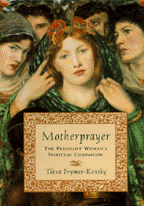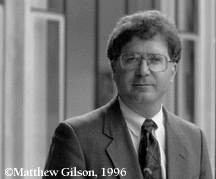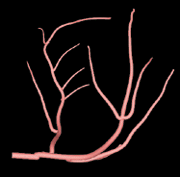 The University of Chicago Magazine February 1996
The University of Chicago Magazine February 1996
Return to February 1996 Table of Contents

Citations
- Expectant mothers can seek spiritual advice from Motherprayer: The Pregnant Woman's Spiritual Companion (Riverhead Books), edited by the Divinity School's Tikva Frymer-Kensky.
- Chicago physicist David Schramm and colleagues in Science report cosmic rays ten times more energetic than any before measured.
- U of C law professor Michael McConnell, JD'79, thinks the Bill of Rights needs an update.
- At the Medical Center, Kenneth Hoffmann and Shiuh-Yung (James) Chen of the radiology department and cardiologist John Carroll, MD'76, collaborate to create 3-D angiograms.
Also in Investigations:Hear this: Howard Nusbaum probes the mind's shifting strategies for interpreting language.
Uncommon Prayer.

Expectant mothers can seek medical advice from a flood of pregnancy manuals. But there's a literary drought, says the Divinity School's Tikva Frymer-Kensky, when it comes to childbearing's sacred dimension. That absence led the Hebrew-bible scholar to create Motherprayer: The Pregnant Woman's Spiritual Companion (Riverhead Books). Frymer-Kensky found that Judeo-Christian writings, with their mostly male authorship, ignore experiences of the body like childbirth. Motherprayer answers this silence with what she calls "recombinant theological engineering"--mixing biblical language with Babylonian and other ancient texts and her own writings. Aiming to "expand our religious traditions in ways that [are] still faithful to them," the book's prayers, poems, and meditations explore the sacred in pregnancy: from infertility and conception to a woman's hopes and fears about her unborn child, impending delivery, and motherhood.
Off the Charts.
They came from deep space and, in the early 1990s, zapped detectors on Earth: The three cosmic rays--atomic nuclei accelerated to ultra-high velocities--were ten times more energetic than any before measured, report Chicago physicist David Schramm and colleagues in Science. Such energy, says Schramm, means the rays may be "the first direct evidence of the universe's earliest moments."
Church and State.

U of C law professor Michael McConnell, JD'79, thinks the Bill of Rights needs an update. Last fall, Illinois Congressman Henry Hyde introduced a constitutional amendment, drafted with McConnell's help, to end what both men see as government discrimination against religious expression. Under the proposal, religious groups offering a public service--such as parochial schools or student organizations--could receive government funds if similar secular groups also did.
Eye on the Heart.


In treating heart disease, angiograms offer a powerful glimpse of coronary blood vessels. Yet up to eight X-rays--and accompanying radiation exposure--are needed to locate good views of affected arteries. Now a U of C Medical Center collaboration is creating 3-D angiograms from just two images: After a doctor or technician identifies vessels on these X-rays, a computer generates a 3-D picture, easily rotated (see inset) to find the best angles for further X-rays. The work, by Kenneth Hoffmann and Shiuh-Yung (James) Chen of the radiology department and cardiologist John Carroll, MD'76, should speed the angiogram, reduce its risk, and shed light on patient anatomy.
Written by Andrew Campbell.
Go to:Return to February 1996 Table of Contents
 The University of Chicago Magazine February 1996
The University of Chicago Magazine February 1996


